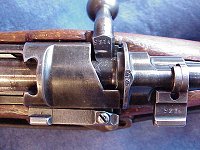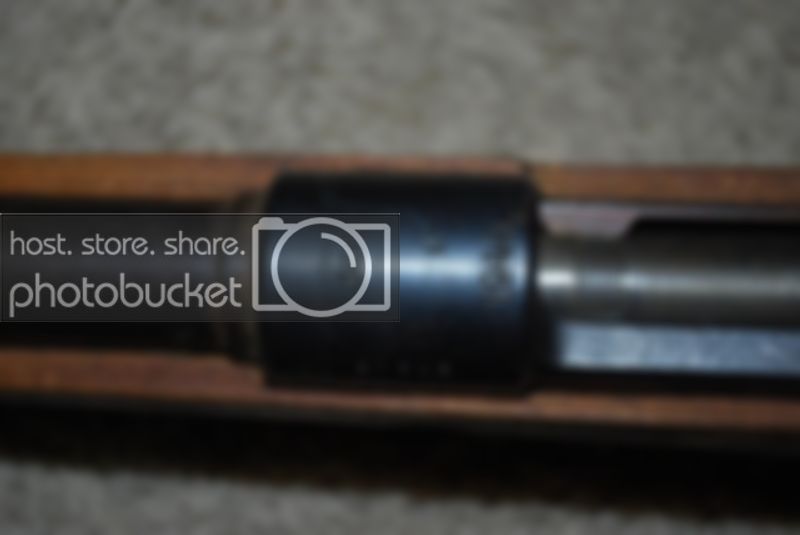
Headspace has been carefully checked for each rifle, and all are excellent in that regard, all bolts are turned-down and blued (as issued). Though the wood is very sound and serviceable it will likely show old bumps and dings from actual wartime usage and may have some nicks and scrapes in the thick shellac-type finish (as is common on all Soviet reworks) from handling and storage. We literally 'hand picked' every single rifle, and selected them for bore condition and uniformity of appearance.ĪLL have a 99% or better refinish (which is hot-dip blued) on the metal though there may be some evidence of slight external speckling caused by a reaction of the metal from exposure to blood (these were, after all, used by the losing side during wartime). All minor parts are milled unless mentioned otherwise (solid front bands are milled but do not have the cut-outs at the top and bottom featured on the earlier H-type bands). Updated The following Nazi 98k rifles are RUSSIAN CAPTURES in EXCELLENT external condition with either laminated (or, infrequently) solid-walnut buttstocks as-noted (some having visible Nazi cartouches on the right side of the wood).

Box 2068 Ormond Beach, FL 32175 (386) 677-7314Ĭlick HERE to email us: captured 98k from WWII Such examples command a much smaller price on the collector’s market. It is important to differentiate between an original 1908 Mauser as depicted, and any of the later adaptations using the 1908 receiver put together from worn rifles by the Itajuba Arsenal in Brazil. The depicted rifle, however, does not have the target any longer. The best examples are often found with a serial numbered matching bayonet and scabbard and sometimes the rifles are accompanied by a sling, muzzle cover and the original DWM sighting target. In one form or another, these rifles stayed in service well into the 1950’s, though a considerable number reached the surplus market in unissued condition – presumably having been stored as war reserve material. The rifles were finished to the highest grade and designed to last for Generations in the service of Brazil – something they did very well. The 1908 Brazillian Mauser is, alongside the 1909 Argentine Mauser, considered to represent the very finest of pre-WW1 German arms manufacturing. The stocks were made of walnut and retain the pre-1905 Gew98 style stock washer as opposed to the bolt takedown disk then in use on the German issue rifles.ġ. The remainder of the rifle was either chemically blued or heat blued. The receiver and bolt were left in the white, as was the bayonet lug. The rifles are essentially the same as the German Gew98 with the most obvious exception being the tang style sight employed in lieu of the Lange-Vernier sight used on the Gew98.

The contract ran from 1908 until the outbreak of war in 1914. The DWM made rifles are more commonly encountered. The maker of any particular rifle can be determined by looking at the address – if Berlin, it is made by DWM. DWM, in turn contracted some rifles out to Mauser Oberndorf, which was also owned by Loewe at the time. The rifles were produced by DWM, then owned by the Ludwig Loewe Company. The Mauser Modelo 1908 long rifle became the standard infantry rifle for the Brazilian Army in 1908. Value will depend upon condition and matching parts.Observations: (by 'Claven2') Note: Pics of rifle provided courtesy of MILSURPS.COM member 'claven2'. No Polish 'bnz' Radom Model 98/40's were made for the SS. Steyr, Mauser ('byf', 'svw') and Brno ('dot') were the last major producers of 98k's in 1944 and the Mauser and Brno output was dedicated to the German Army. 98k's for the SS earlier, but were diverted to StGw 44 production in early 1944. 98k's made by Steyr are dated with a '44' (1944) date code. Some factories had multiple offices, and some articles were made up of parts inspected at different factories, explaining multiple WaA numbers on a single firearm. The 'XXX' number was the number of the inspection office assigned by the German Army's Quartermaster Corps. The 'Eagle' mark over a 'WaA XXX' is the German military inspector's acceptance stamp. It also appears on war material made at factories under Steyr supervision, such as the Radom factory in Poland.

German mauser rifle serial numbers code#
The 'bnz' production code was assigned by Organization Todt to production of German war material at the Steyr factories in what had been Austria during most of WW II.


 0 kommentar(er)
0 kommentar(er)
